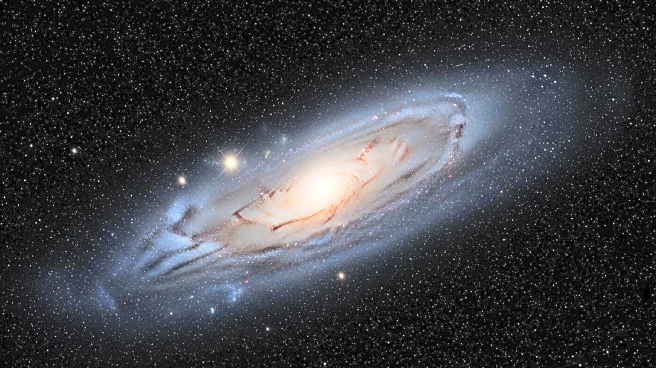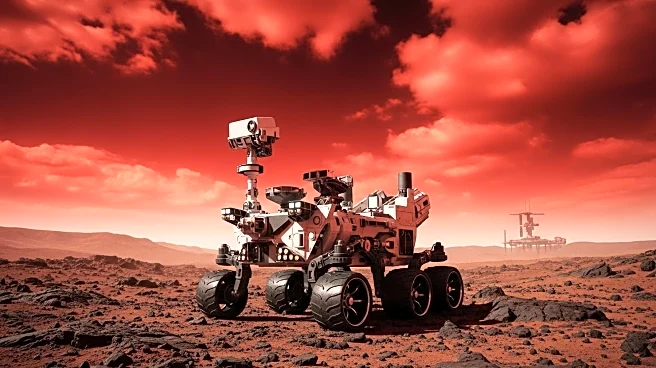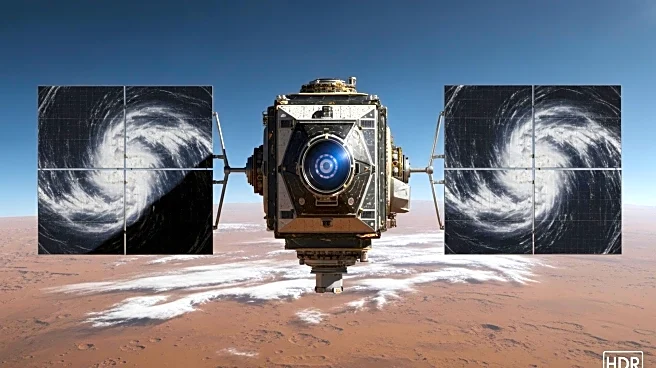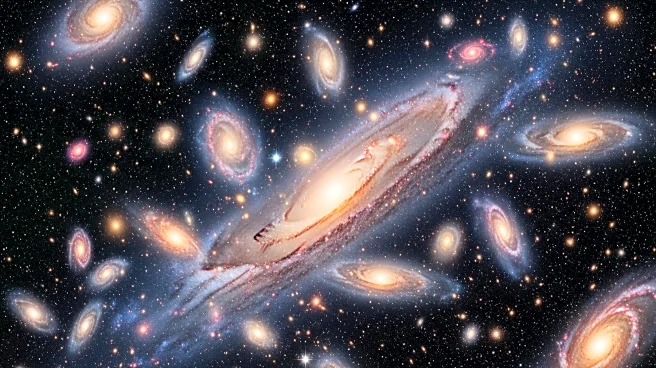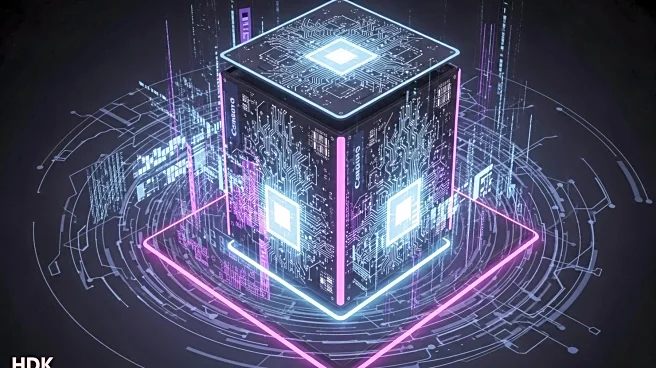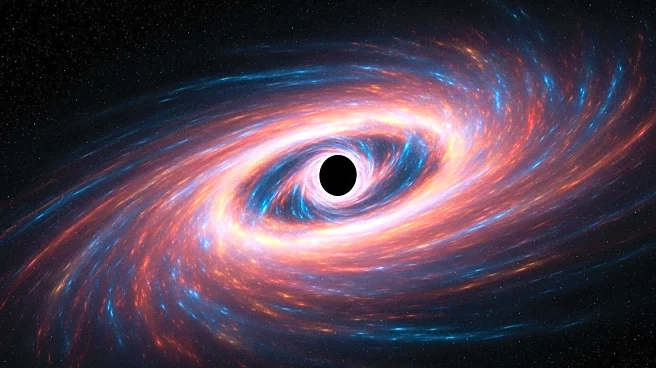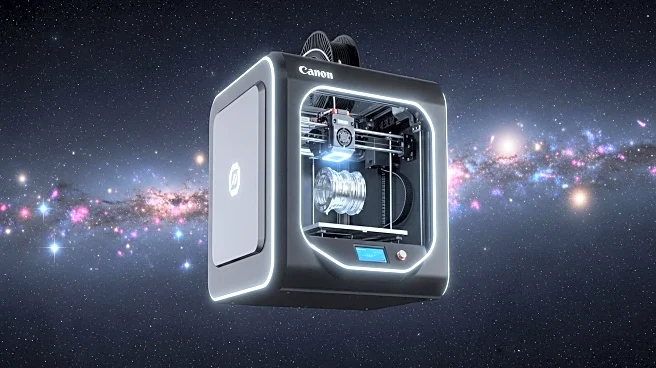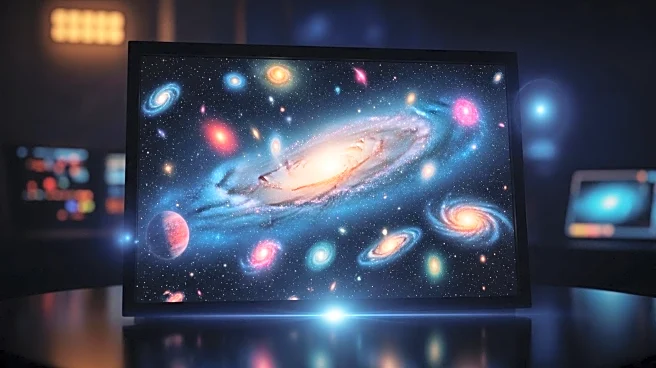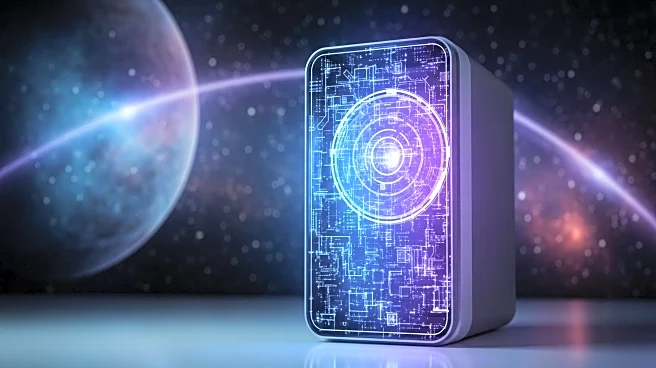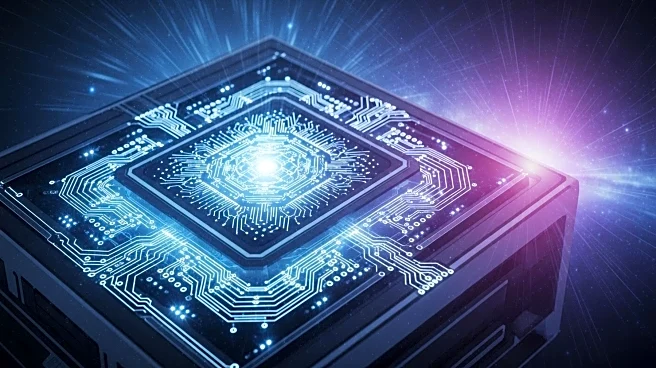What is the story about?
What's Happening?
The Euclid Consortium, part of the European Space Agency's Euclid space telescope mission, has released Flagship 2, the most extensive and detailed simulation of the universe ever created. This digital model includes 3.4 billion galaxies and simulates the gravitational interactions of over 4 trillion particles. Developed using an algorithm by University of Zurich astrophysicist Joachim Stadel, the simulation was generated on the Piz Daint supercomputer. The simulation is designed to assist scientists in analyzing data collected by the Euclid space telescope, which aims to explore dark matter and dark energy. The Euclid telescope, launched in July 2023, is positioned at the Sun-Earth Lagrange Point 2 and is tasked with capturing detailed images of galaxies to understand the universe's accelerating expansion.
Why It's Important?
The release of Flagship 2 is significant for the scientific community as it provides a comprehensive tool for understanding the universe's structure and behavior. By comparing Euclid's observational data with the simulation, scientists can test and refine current cosmological models, particularly concerning dark matter and dark energy, which constitute 95% of the universe but remain largely mysterious. The simulation's alignment with Euclid's data could confirm existing theories or reveal new cosmic phenomena, potentially leading to groundbreaking discoveries in astrophysics. This project underscores the importance of international collaboration in advancing space exploration and our understanding of the universe.
What's Next?
The Euclid mission is expected to continue its observations, with the next major data release, Data Release 1 (DR1), scheduled for October 21, 2026. Scientists anticipate that Euclid will uncover rare cosmic phenomena due to its extensive coverage of the universe. The ongoing analysis of Euclid's data, in conjunction with the Flagship 2 simulation, may challenge or confirm the standard cosmological model, potentially leading to revisions in our understanding of the universe's expansion and the nature of dark matter and dark energy.
AI Generated Content
Do you find this article useful?
